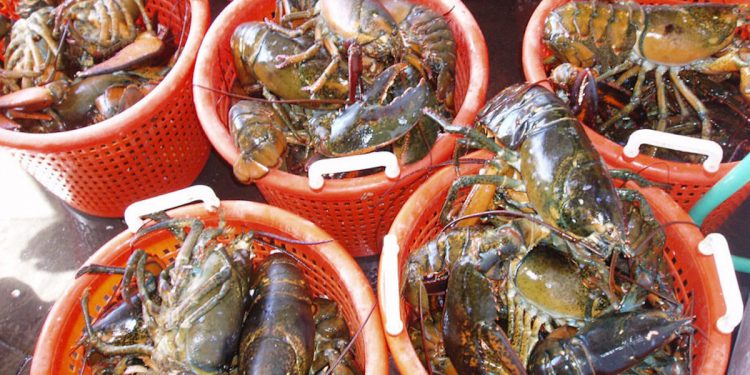Cefas has launched a campaign to raise awareness within the UK fishing community of the threat to native species from the non-native species of lobster, the American lobster.

This Defra-funded initiative encourages fishermen and others to retain and report any American lobsters that they capture, to measure and reduce impacts they are having in our marine environment.
American lobsters have been imported to the UK since the late 1950s for consumption in restaurants and homes. In 2015, 1744 tonnes were imported, worth £15.75 million.
American lobsters tend to grow to larger sizes than European lobster, have a larger dietary range, are more tolerant of different habitats, are more aggressive and produce more eggs than European lobsters. This means they are at a competitive advantage over the native species. American lobsters might also carry the bacterial disease, Gaffkaemia, or Epizootic Shell Disease. Transferring these diseases to native stocks could result in major economic losses to the fishing industry.
There is also a risk of American lobsters bringing other non-native species to UK waters, such as barnacles and other small invertebrates which have attached themselves to the lobster.
The campaign aims to engage with lobster fishermen, explaining the legal position, how to identify an American lobster, the risks posed by the animals and the importance of retaining and reporting them to their local fisheries officers at the Inshore Fisheries and Conservation Authority (IFCA) or Marine Management Organisation (MMO).

Knowingly releasing a non-native species to the wild is an offence under the Wildlife and Countryside Act, including returning one to the sea at point of capture.
‘This a great opportunity for us to work with industry to gain information about whether these animals are affecting their fishery or not,’ said Cefas project lead Debbie Murphy.
‘By collecting this data Defra will be in a stronger position to make informed decisions regarding policy, and able to work to protect both the trade in American lobsters and wild stocks of European lobsters.’
Reports of American lobsters caught in UK waters have historically been in low numbers and generally single animals, contributed to by escapes from holding tanks or releases by well-meaning members of the public or religious groups.
The biggest contributor to American lobsters in English waters was a mass-release in June 2015 of 361 specimens off Brighton by Buddhist monks as part of their religious practice known as fang sheng. In the months following this release, 136 American lobsters were removed from the sea in the surrounding area making up a large proportion of the 149 American lobsters reported from 2012 to 2018.
Almost five years on from the mass release and with less than half of the American lobsters having been reported as recaptured, Defra are keen to know what impact the animals may have had.
Posters and leaflets designed to help fishers understand the key features commonly associated with American lobster compared to European lobster, along with contact details to report suspected American lobsters have been produced by Cefas and are available on the GB Non-Native Species Secretariat website. Similar campaigns are planned in Scotland, Northern Ireland and Wales in 2020.









